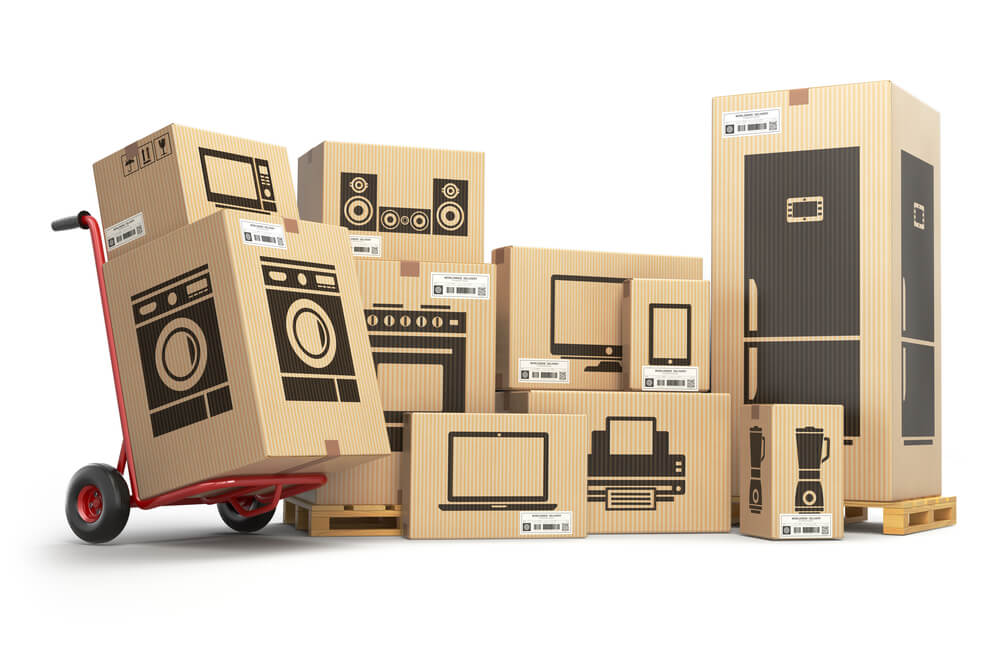Most moving companies, like Master Movers, do not disconnect or reconnect any power or water lines to your appliances. Preparing appliances for moving, such as your washer, dryer and refrigerator, falls on homeowners, who can do it themselves or hire a professional. Once you have gotten your appliances ready properly, Master Movers will transport them carefully and safely to your new home. Read on for tips on preparing your appliances for moving.
Preparing Your Appliances for Moving
Master Movers is happy to move your appliances with the utmost care to ensure they reach your new home safely. We ask that certain preparations get done prior to our moving them to ensure nothing becomes damaged. As movers, we are not licensed to perform plumbing or electrical type tasks. Hiring a plumber exists as an alternative if you do not want to disconnect and/or reconnect any power or water lines yourself. As you get ready to move, there may be several appliances that need disconnecting or have recommended prep performed before we move them. We’ve included some tips below.
We encourage you to start thinking about preparing your appliances for moving a few weeks before moving day, in case you need time to order parts or have trouble finding the owner’s manual.
It’s recommended that you reference your owner’s manual to check the manufacturer’s guidelines for a move. If you don’t have the printed version of the owner’s manual, you can usually find it online with the name of your brand, model and the words “owner’s manual.” The manufacturer, Online Manuals and local appliance repair shops are also good resources.
Additionally, before getting started, we suggest you gather supplies you might need, such as:
- Bleach or vinegar
- Bucket or large bowl
- Slip-joint pliers
- Household cleaner
- Washer shipping bolt kit or foam, depending on whether you load laundry in the front or the top (check your owner’s manual)
Steps for Moving a Washer
The following directions apply to both top-loader and front-loader washing machines. Follow these steps unless the owner’s manual gives you other instructions. Begin preparing your appliances for moving at least one day before the moving company arrives. Remember, you can always hire a plumber or appliance technician to disconnect and drain your washer.
- Clean it. Run an empty machine through a normal wash cycle using hot water. Add bleach or white vinegar to help clean the drum and drain lines. Leave the door open at least 24 hours to dry.
- Shut off water supply. These valves can usually be found behind the washer on the wall.
- Turn off the power. Shut off the washer on your home’s electrical panel.
- Unplug the washing machine from the outlet.
- Disconnect the hoses for the water supply. Use slip-joint pliers to remove the hot and cold water hose connectors one at a time from the valves on the wall. Keep the hoses upright over a bucket or other large container to keep the water from spilling on the flooring.
- Disconnect water hoses from the washing machine side using slip-joint pliers. Wrap the hoses thoroughly in a towel and place them inside the machine to avoid damage from the metal ends.
- Keep the drain hose attached. The moving crew will secure the drain and keep it from leaking while in transit.
- Clean the outside of the machine with any household cleaner.
- Secure the drum on your washer. For front-loaders install washer shipping bolts, also known as washer locks that cost as little as $10 depending on the brand of washer you own. You typically insert shipping bolts in the rear of the washer to secure the drum. For top-loaders, wedge foam or cardboard between the drum and the case. This is important because moving companies cannot assume liability for the drum and its ability to function after the rigors of moving.
Steps for Moving a Dryer
- If the dryer drum appears discolored, clean it with a mild liquid household cleaner or a paste of laundry detergent and warm water. Rub the area until its clean and wipe it dry. Run a load of old rags to remove any remaining cleaning residue.
- Once you complete this, turn off power to the dryer from the electrical panel and unplug it.
- For a dryer connected to natural gas, please check with a qualified professional about how to safely disconnect it.
- Remove any debris from the lint screen and remove dust from the interior with a damp sponge.
- Carefully pull the dryer from the wall and disconnect the vent pipe by removing the clamp.
- Clean the outside of the machine with any household cleaner.
Steps for Moving a Refrigerator or Freezer
- Empty your refrigerator and freezer of all food.
- Turn off the water and disconnect the water line, if you have a water dispenser or automatic ice maker. Additionally, empty the water reservoir.
- Turn off the power and unplug your refrigerator.
- Defrost the freezer on your refrigerator. Refer to the owner’s manual to find out how long this will take.
- Clean and dry it.
- If you have an older model, you may need to have the motor or compressor bolted down. Most modern refrigerators are sealed units and do not require this.
- After moving, refer to your owner’s manual on how long you should wait to allow oil time to settle to prevent possible damage to the compressor.
Hire Master Movers Today!
After preparing your appliances for moving, put Master Movers 25 years of experience to use! Our careful reliable service will deliver your appliances to their new home in top condition and ready for installation. Call us today to help with your move!


